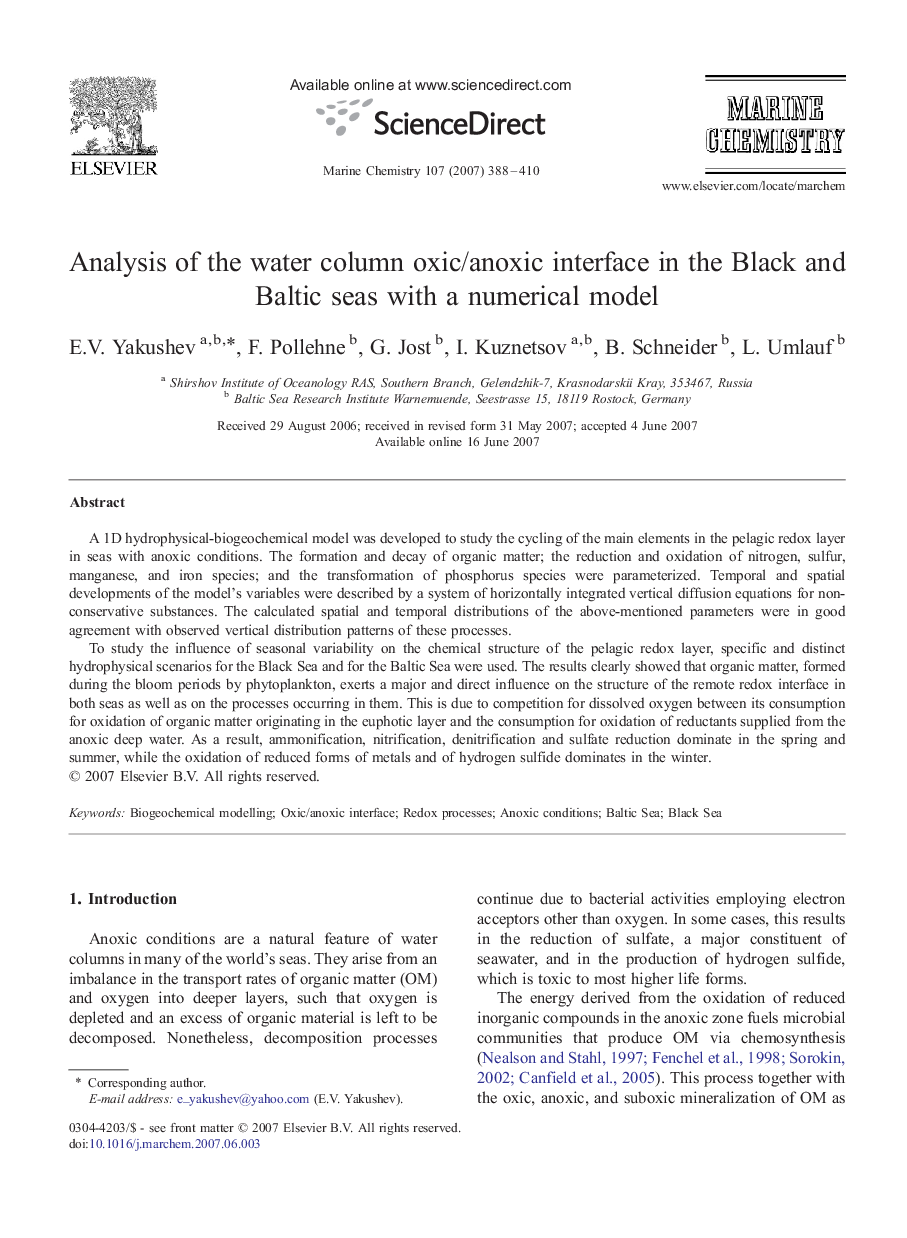| Article ID | Journal | Published Year | Pages | File Type |
|---|---|---|---|---|
| 1262468 | Marine Chemistry | 2007 | 23 Pages |
A 1D hydrophysical-biogeochemical model was developed to study the cycling of the main elements in the pelagic redox layer in seas with anoxic conditions. The formation and decay of organic matter; the reduction and oxidation of nitrogen, sulfur, manganese, and iron species; and the transformation of phosphorus species were parameterized. Temporal and spatial developments of the model's variables were described by a system of horizontally integrated vertical diffusion equations for non-conservative substances. The calculated spatial and temporal distributions of the above-mentioned parameters were in good agreement with observed vertical distribution patterns of these processes.To study the influence of seasonal variability on the chemical structure of the pelagic redox layer, specific and distinct hydrophysical scenarios for the Black Sea and for the Baltic Sea were used. The results clearly showed that organic matter, formed during the bloom periods by phytoplankton, exerts a major and direct influence on the structure of the remote redox interface in both seas as well as on the processes occurring in them. This is due to competition for dissolved oxygen between its consumption for oxidation of organic matter originating in the euphotic layer and the consumption for oxidation of reductants supplied from the anoxic deep water. As a result, ammonification, nitrification, denitrification and sulfate reduction dominate in the spring and summer, while the oxidation of reduced forms of metals and of hydrogen sulfide dominates in the winter.
